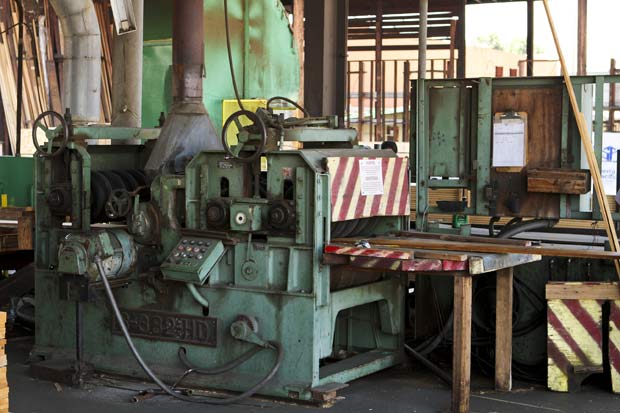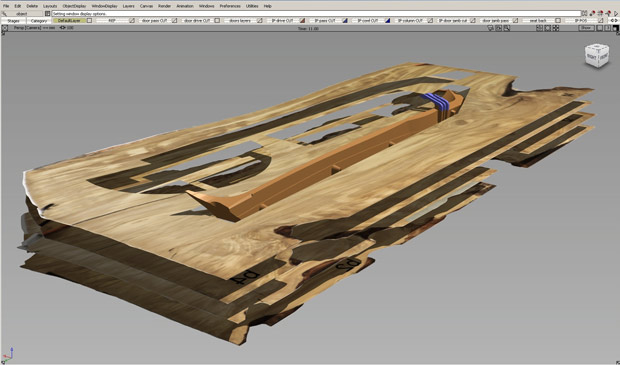Creating the Cadillac Ciel’s Wood Interior
Our exclusive look at how a 300 year old tree became a key element in Cadillac’s ultra-luxurious concept car

The Ciel is Cadillac’s latest attempt to reinvigorate the company’s heritage of American luxury—reflected both in its attention to detail and its desire to explore the journey of traveling by automobile. One of the concept car’s most striking elements is the solid olive wood used inside the passenger cabin. When talking to the car’s design team we learned about the extensive process they went through to integrate the wood into the design. Project Manager Alessandro Zezza from Cadillac’s Advanced Design Group shared the story of its creation—a long journey that began early in the design phase around two years ago. Make sure you check out the amazing images in our slideshow below.

Based on the complexity of the car’s initial drawings the team realized that veneered wood was not going to be an option, so Christine Ebner, who heads up color and trim in the studio, set out to find a hardwood solution. In addition to the usual concerns about finding wood that complimented the car’s design, the designers realized that they needed to mill the components from sequential planks, and that they needed 11 two-inch planks—four of which had to be glued together to create the interior’s larger pieces. That’s a very big, old tree and issues of sustainability were a big concern in the studio.
Christine, located what seemed like a prime candidate—a very rare, 300-year-old olive tree that had fallen in a storm in its native Naples, Italy—at Hearne Hardwoods in Oxford, PA, a wood yard outside of Philadelphia. Rick Hearne worked with Christine to find the perfect tree, and fortunately this one had already been dried in a kiln and been sequenced. Fortunately, the designers loved the Italian olive wood’s rich grain and markings, and the team set to work.

The journey began on a beautiful planer from the 1940s, which took on the 30″ wide trunk with ease. The planks were sanded, photographed, and aligned on a gantry mill (a large platform designed for cutting planks) with their outer skin still on. Registration holes were drilled, and XYZ coordinates taken. The planks were then replicated in Alias’s Autostudio using texture and planar maps, which enabled Alessando to analyze the grain and develop a very intricate map of from where each piece would be cut. An incredibly complex 3D puzzle, each piece needed to be cut around the tree’s knots and splits while also ensuring that the grain direction and tree ring orientation matched. There was only one trunk to work with, and every piece had to be accounted for.
Darryl Grijalva, the studio’s shop manager, then created the tool paths for each plank and part. Dowel pins were used to ensure that the boards lined up properly and stayed in place when they were glued. Once the blocks were ready they were sent over to 3D Mass Design and Engineering in Glendale, CA. Rocky Gonzalez, who oversaw the fabrication there, had to work around concerns of chipping and warping, but the wood cut beautifully.

From there they were sent over to Metalcrafters in Fountain Valley, CA for test fitting and then to Tom Houlden, who ensured that the wood was finished to spec with its final staining (medium warm) and finishing (clear satin). After their lengthy journey—from Italy to Philadelphia and from studio to studio around Los Angeles, the 21 completed pieces were brought back to Metalcrafters for their final fit, and then back to the GM studio for final assembly.
It seems appropriate that the journey of the wood, through the vision of the design team and the many skilled artisans who crafted the interior, isn’t that different from the kind of relaxed, refined and elegant journey the Ciel was designed to take.
Photos provided by the GM Design Studio; photos of the finished car by Josh Rubin. For more images see gallery below.




















